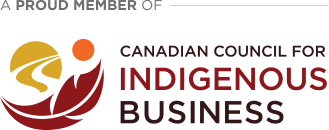Your cart is currently empty!

ISO 29163:2009
ISO 29163:2009 Information technology РSharable Content Object Reference Model (SCORM®) 2004 3rd Edition РPart 4: Sequencing and Navigation Version 1.1
CDN $390.00
Description
Within the context of the Sharable Content Object Reference Model (SCORM®), ISO/IEC TR 29163-4:2009 describes how SCORM® conformant content can be sequenced to the learner through a set of learner or system-initiated navigation events. The branching and flow of that content can be described by a predefined set of activities.
ISO/IEC TR 29163-4:2009 covers the essential Learning Management System (LMS) responsibilities for sequencing content objects (Sharable Content Objects [SCOs] or Assets) during run-time and allowing SCOs to indicate navigation requests. In addition, guidance is offered for providing navigation controls to learners. General subjects discussed include the following:
- Sequencing Concepts and Terminology (e.g., Learning Activities, Activity Trees, Clusters);
- Sequencing Definition Model (i.e., detailed descriptions and requirements of the sequencing information that can be applied to learning activities);
- Sequencing Behavior Model (i.e., detailed descriptions of LMS behaviors to prescribed sequencing information and learner’s experience with learning content);
- Navigation Controls and Requirements;
- Navigation Data Model.
Communication between content and LMSs facilitates use of SCORM® Sequencing and Navigation to present content to learners based on learner choices and performance at run-time. This communication also enables LMSs to track learner completion and progress while content is presented to the learner. ISO/IEC TR 29163-4:2009 describes in detail how sequencing behaviors are applied to track learner progress.
Edition
1
Published Date
2009-12-03
Status
PUBLISHED
Pages
226
Format 
Secure PDF
Secure – PDF details
- Save your file locally or view it via a web viewer
- Viewing permissions are restricted exclusively to the purchaser
- Device limits - 3
- Printing – Enabled only to print (1) copy
See more about our Environmental Commitment
Abstract
Within the context of the Sharable Content Object Reference Model (SCORM®), ISO/IEC TR 29163-4:2009 describes how SCORM® conformant content can be sequenced to the learner through a set of learner or system-initiated navigation events. The branching and flow of that content can be described by a predefined set of activities.
ISO/IEC TR 29163-4:2009 covers the essential Learning Management System (LMS) responsibilities for sequencing content objects (Sharable Content Objects [SCOs] or Assets) during run-time and allowing SCOs to indicate navigation requests. In addition, guidance is offered for providing navigation controls to learners. General subjects discussed include the following:
- Sequencing Concepts and Terminology (e.g., Learning Activities, Activity Trees, Clusters);
- Sequencing Definition Model (i.e., detailed descriptions and requirements of the sequencing information that can be applied to learning activities);
- Sequencing Behavior Model (i.e., detailed descriptions of LMS behaviors to prescribed sequencing information and learner's experience with learning content);
- Navigation Controls and Requirements;
- Navigation Data Model.
Communication between content and LMSs facilitates use of SCORM® Sequencing and Navigation to present content to learners based on learner choices and performance at run-time. This communication also enables LMSs to track learner completion and progress while content is presented to the learner. ISO/IEC TR 29163-4:2009 describes in detail how sequencing behaviors are applied to track learner progress.
Previous Editions
Can’t find what you are looking for?
Please contact us at:
Related Documents
-

ISO 24634:2024 Management of terminology resources – TermBase eXchange (TBX)-compliant representation of concept relations and subject fields
0 out of 5CDN $173.00 Add to cart -

ISO 3833:1977 Road vehicles – Types – Terms and definitions
0 out of 5CDN $115.00 Add to cart -

ISO 20537:2025 Footwear – Identification of defects during visual inspection – Vocabulary
0 out of 5CDN $273.00 Add to cart -

ISO 24617:2025 Language resource management – Semantic annotation framework (SemAF) – Part 12: Quantification
0 out of 5CDN $312.00 Add to cart







